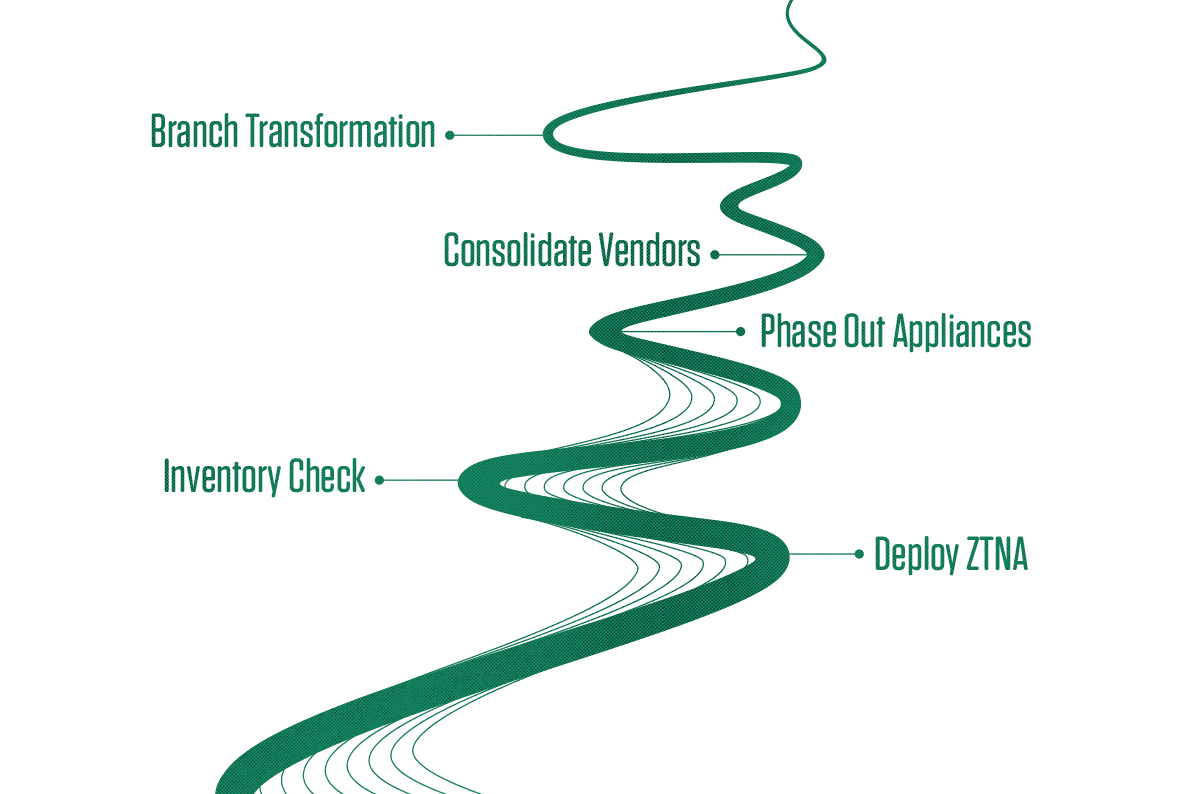|
Listen to post:
Getting your Trinity Audio player ready...
|
Understanding the 2021 Strategic Roadmap for SASE Convergence
In July 2019, Gartner coined the term Secure Access Service Edge (SASE) to define the next generation of network security technology. SASE solutions acknowledge that modern networks and security challenges are very different from the past. By integrating core security capabilities into a single service and moving them to the cloud, SASE meets the needs of the modern digital business.
In March, Gartner published this year’s 2021 strategic roadmap for SASE convergence, which details how organizations can transition from legacy security architectures to fully integrated SASE deployments. I highly recommend that you check out the report for yourself as it provides a clear and compelling vision for organizations looking to start or continue their journey to SASE.
Cato SASE Cloud: The Future SASE – Today and Tomorrow | eBookArchitectural Transformation is Driving SASE Forward
Gartner’s claim that SASE is “the future of network security” is based on the fact that corporate networks and infrastructures are evolving and legacy security solutions are not keeping up. In the past, companies could rely on a patchwork of perimeter-based security solutions to protect corporate assets located in on-premises data centers against attack.
The modern enterprise has moved many or all of its IT assets to the cloud to take advantage of the increased flexibility and scalability that it provides. As the traditional network perimeter dissolves and organizations move more quickly, security must become software-defined and cloud-delivered to effectively protect organizations against evolving threats.
Attempting to protect the modern enterprise with a legacy security architecture is unscalable and inefficient. The average organization has dozens of standalone security solutions to configure, monitor, and maintain, often with lean security teams. As a result, many organizations struggle to secure their existing infrastructure let alone securely adapt to changing requirements, such as the adoption of work from home or hybrid work models as a result of the COVID-19 pandemic.
As organizations’ infrastructure and business needs evolve, they require modern SASE Architecture to meet their security requirements. Some of the main SASE Benefits to the modern enterprise include:
- Solution Integration: SASE includes a full network security stack.
- Cloud-Native Security: SASE is hosted in the cloud, making it well suited to securing distributed organizations and cloud-hosted applications.
- Flexibility: As a cloud-native solution, SASE offers greater scalability and lower cost than appliance-based solutions.
- Network Optimization: SASE solutions include SD-WAN network optimization over encrypted links between SASE PoPs (points of presence).
Short Term Solutions and Recommended Deployment of SASE
The goal of Gartner’s strategic roadmap for SASE adoption is to help enterprises make the move from legacy security architectures to SASE. In many cases, existing commitments and limited resources make it impossible for these organizations to make the jump all at once. Gartner breaks the process into manageable steps to help organizations work through the process.
Gartner defines a number of short-term goals for organizations making the move to SASE. These goals include:
- Deploying Zero Trust Network Access (ZTNA): With the rapid growth of remote work, replacing legacy virtual private networks (VPNs) for remote users is a major priority. The ZTNA capabilities of SASE make it a more secure alternative to legacy remote access solutions that allows organizations to implement their zero trust strategies to better protect their data and users.
- Creating a Phase-Out Plan: Gartner recommends performing a complete equipment and contract inventory and developing a timeline for phasing out on-premises perimeter and branch security appliances. These solutions can then be replaced with SASE capabilities hosted in the cloud.
- Consolidating Vendors: SASE offers complete integration of a wide range of security capabilities, eliminating the need for standalone solutions from multiple vendors. Making the switch to SASE simplifies and streamlines every aspect of security from solution acquisition to long-term monitoring and maintenance.
- Performing Branch Transformation: Security appliances deployed at each physical location creates a complex and sprawling security architecture. Working to move these solutions to the cloud centralizes and simplifies an organization’s security.
In addition to these short-term goals, Gartner also outlines a number of long-term goals that an organization should pursue. These largely focus on taking advantage of the security integration and ZTNA capabilities of SASE to centralize and streamline security operations across the enterprise.
Achieving even these short-term goals can be a significant milestone for an organization. Most companies will need to develop a multi-year strategy for making the move to SASE. While this strategy will differ from one company to another, Gartner makes one recommendation that applies across the board: start the process today. To learn more about how to start your transition to SASE, don’t hesitate to contact us or request a demo today.










